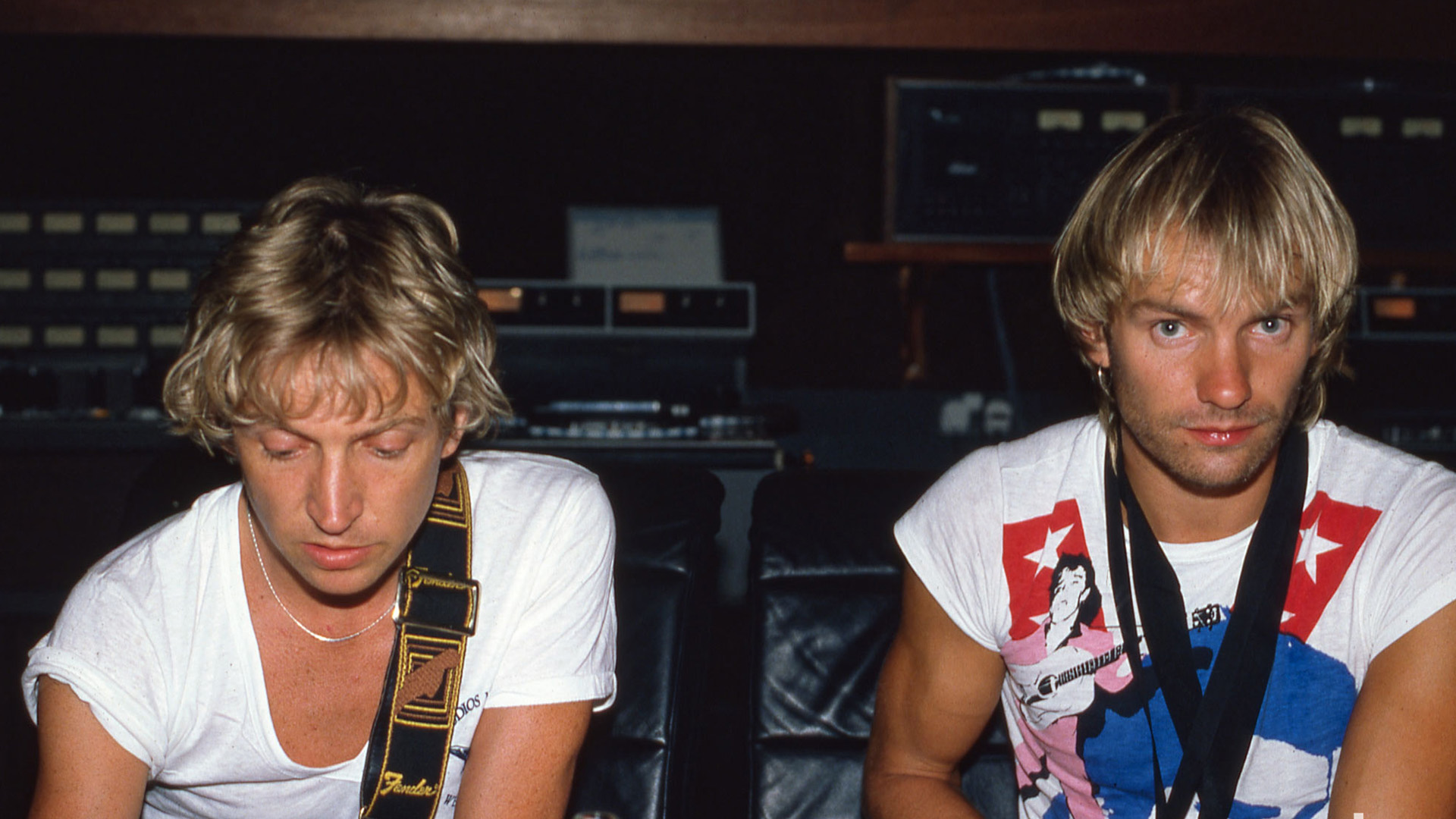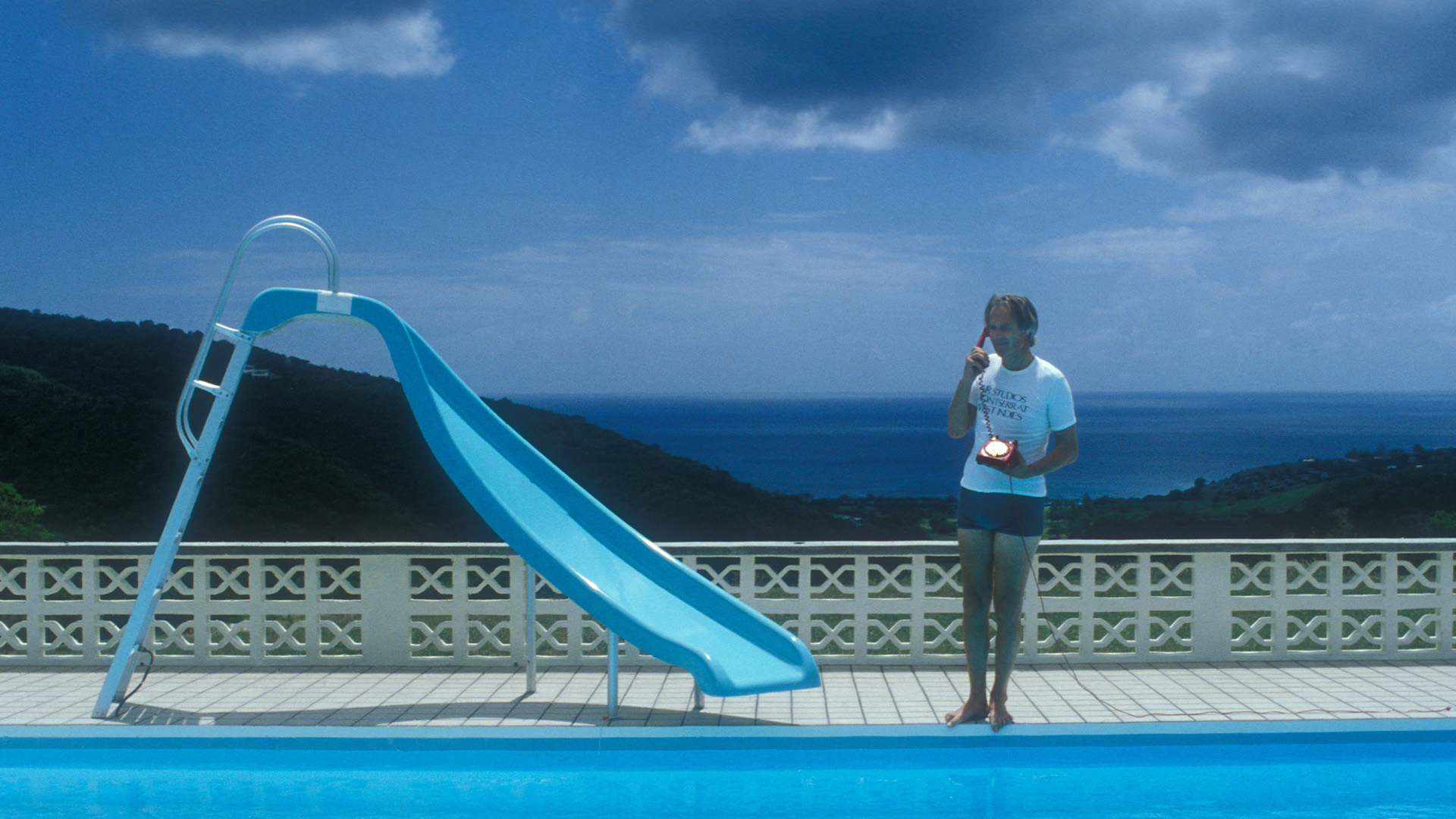Under the Volcano, the biggest stars made generation-defining records

An Australian filmmaker revisits the 1980s and George Martin’s beloved Caribbean studio AIR Montserrat in Under the Volcano – streaming on Stan. David Michael Brown dives into the exhaustive doco, chronicling the blissful setting in which some of the biggest albums ever were made.
Under the Volcano
Harking back to an era when men who worked in hardware stores wanted their money for nothing and their chicks for free, Elton John was still standing and everything that Sting did was magic, rock doc Under the Volcano takes a trip to Montserrat, the idyllic location of uber-producer George Martin’s legendary AIR Studios. And it’s directed by Australian filmmaker Gracie Otto.
Born into Aussie filmmaking royalty, Otto started her career as an actress but it was her 2013 documentary The Last Impresario, about the legendary British producer Michael White, that heralded her as a director of note. Since then, she has directed the kitsch Dolly Parton impersonation comedy Seriously Red along with episodes of the brilliant Deadloch, Heartbreak High and The Artful Dodger, but documentaries are where she shines.
Like her debut feature, Otto’s exhaustive documentary gives the Fab Four’s favourite producer’s work a historical context, leading to the moment when Martin (often hailed as the fifth Beatle), along with other leading record producers Ron Richards, John Burgess and Peter Sullivan, established Associated Independent Recordings and opened AIR Studios in central London in 1970. Its sister studio, AIR Montserrat followed in 1979.

Under the Volcano explores the 10 blissed-out years of island life before natural disaster struck. It was on this remote Caribbean Isle, in the shadow of a then-dormant volcano, that the world’s biggest recording artists holidayed while recording some of the most iconic albums of the ’80s.
Making full use of a wealth of stills and archival footage, including Paul McCartney and Police drummer Stewart Copeland’s home movies, and a host of talking heads from every avenue of the industry including luminaries such as Jimmy Buffett, Sting, Mark Knopfler, Midge Ure from Ultravox, Earth, Wind & Fire’s Verdine White, Martin’s son and fellow producer Giles, Otto leaves no (rolling) stone unturned. Duran Duran keyboardist Nick Rhodes recalls in the film how the band were looking for somewhere to record a follow-up to their globe conquering album Rio.
“We thought we can’t go back to England, because it was just a little bit too crazy with all the hysteria at that point. We really couldn’t move in the street. So, we wanted to get as far away as we could. Air Studios Montserrat looked very appealing from the brochures. And, of course, having George Martin involved, we figured that every thing’s going to be perfect.”
What ensues is a creative narrative as Otto teases out honest and engaging answers from the illustrious artists and even more so, the delightful workers at the studio. In particular Danny Sweeney, the jovial man who gave Sting windsurfing lessons and whose dancing limbs told Dire Straits that they had a hit on their hands with Walk of Life.
We hear how Paul McCartney arrived on the island with a huge entourage, including armed bodyguards (and soon let them roam free to enjoy the island) along with fellow Beatle Ringo Starr and their respective partners Linda McCartney and The Spy Who Loved Me “Bond girl” Barbara Bach, to record tracks for his Pipes of Peace album. One of those tracks was Ebony and Ivory with a certain Stevie Wonder. While the Superstition singer was at the studio, he declared he wanted to play a gig and a surprise slot at a local bar was hastily organised. The audio of this marathon impromptu performance is one of the film’s many highlights.
Elton John reunited with his early 70s band members and co-writer Bernie Taupin and resurrected his career recording the smash hits I’m Still Standing and I Guess That’s Why They Call It the Blues from his album Too Low for Zero. The sun, glistening pool and freedom are common threads throughout the documentary for artists used to recording in a dark and dingy recording studio in London.
Jimmy Buffett regales how his song Volcano was inspired by his stay on the island but its new wave punks The Police, who recorded their two final albums Ghost in The Machine and Synchronicity, on whom the island had the most profound effect. The band even filmed the music video for Every Little Thing She Does is Magic on the island, the influence of Monserrat’s African heritage obvious in the song’s calypso fused pop stylings. For Sting, Copeland and Andy Summers, it was a tumultuous time that saw the band at loggerheads with each other. By the time they made Synchronicity, they needed to experience island life again.
“It was a period of stratospheric success,” explained the artist formally known as Gordon Sumner when talking to Otto. “And a part of that, the speed and the size of that success, also distorts your perception of it. And we were so filled with this forward momentum we didn’t really get a chance to appreciate it—except for Montserrat, which allowed us to calm down.”
Things weren’t so calm when the Rolling Stones arrived to record a few tracks from their comeback album Steel Wheels on Montserrat. Mick Jagger and Keith Richards had patched up their differences after a very public spat in the mid-’80s, although things were still tense as producer Chris Kimsey explains in the film:
“We were listening back to Mixed Emotions, creative consultant Peter Mensch was talking to Keith suggesting that an arrangement change should be made. At which point Keith delved into his doctor’s bag—one of these beautiful old leather doctor’s bag—and brought out a knife and pinned it between his legs. And said to Peter something in the terms of, ‘Listen, Sonny, nobody tells the Rolling Stones how to write a song.’ Which I thought was classic. Wonderful. And the arrangement never changed.”
The Glimmer Twins had barely left before disaster hit Montserrat. In September 1989, Hurricane Hugo struck the island, devastating the landscape and affecting over 90% of homes on the island. The Studio survived but never reopened. Otto’s film perfectly captures the sense of loss. That monumental moment in history that helped colour the musical landscape of a decade. Most rock docs focus on the music and those who create it. Under the Volcano focuses on the beautiful environs and people which inspired them to write songs that helped define as generation.


















